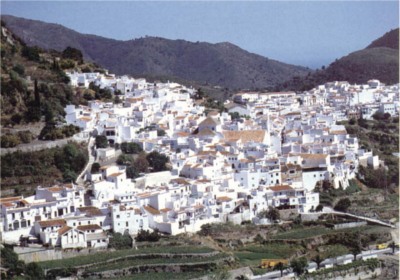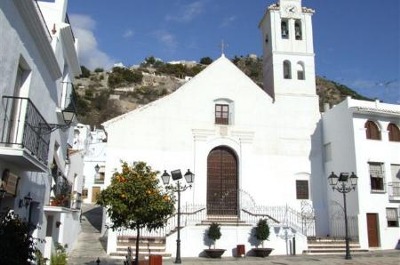Embroidered into the rich tapestry of modern Spain's existence is a fascinating history, with many of its beautiful and quietly charismatic mountain village bearing the hallmarks of a timeless existence. Each village having its own individual story to tell, but, usually, the real truth behind them has been lost to antiquity. Thus, historians and archaeologists are left to try and piece the leftovers of man's inhumanity to man together.
As history has proven many times, such events have happened in the most unlikely of places, and inevitably leave their own footprints in the sands of time for those who would care to look for them. We have all been there, when, regardless of where we are at a particular moment, when that 'deja vu' feeling suddenly awakens deep inside of us. A perfect example being the Andalucían village of Frigiliana.
 Geographically situated some 1000 feet above and approximately only 5 kilometres away from the glistening Mediterranean Sea, with a magnificent back drop of the Almijara Mountain range behind it, this beautiful village has a particularly unique character and past all of its own. One which lies buried deep under eons of time, but which was born from its earliest known foundations, which have been revealed in archaeological artefacts as old as 3000 BC.
Geographically situated some 1000 feet above and approximately only 5 kilometres away from the glistening Mediterranean Sea, with a magnificent back drop of the Almijara Mountain range behind it, this beautiful village has a particularly unique character and past all of its own. One which lies buried deep under eons of time, but which was born from its earliest known foundations, which have been revealed in archaeological artefacts as old as 3000 BC.
An ancient combined culture of the Moors and Islam, the Roman Civilization, its Phoenician occupations, the Christian world, but even now, especially now, the Arabic influence, seen and felt from the whole Moorish inspired architecture, which is in abundance there. In 1569AD, Nerja led its Christian army against the Arab nations, and fought and won this battle at the Rock of Frigiliana, but as a particularly brutal reminder of this, is the fact that many of the women of Frigliana committed suicide by jumping from the mountain heights, rather than be taken captive.
 This is hardly surprising when one considers the inhuman cruelty of Catholics at that time to those who would not convert, especially their cruelty to the Moors. It was Philip II of Spain, who in 1567 ordered that the Moors had to lay down their beliefs in Islam, and were banned from speaking Arabic in public, and even further, that their children would be taken away from them and brought up by Catholic Priests into the Christian Faith.
This is hardly surprising when one considers the inhuman cruelty of Catholics at that time to those who would not convert, especially their cruelty to the Moors. It was Philip II of Spain, who in 1567 ordered that the Moors had to lay down their beliefs in Islam, and were banned from speaking Arabic in public, and even further, that their children would be taken away from them and brought up by Catholic Priests into the Christian Faith.
So much for the human race, but no matter how we try to hide our sins, we always leave our bloody footprints in the sands of time for others to read.